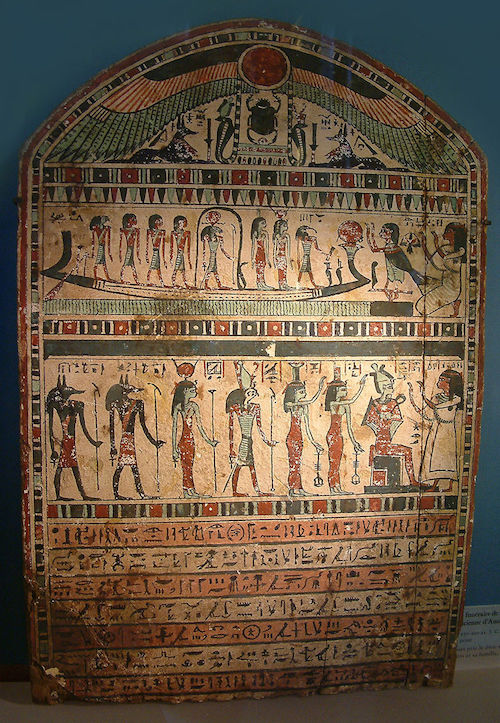There were an incredible number of Gods and Goddesses in Ancient Egypt, one for almost every situation and place. Many of the Gods began as local deities and were later organised and merged with others to form either a Triad or an Ennead (nine).
There were several large schools of theological thought in Egypt, and each proclaimed its superiority over the others. A ruling dynasty would often promote their chief local god to the chief national god. For example, Amun (associated with Thebes) did not become a major deity until the shift of power to Thebes in the Middle Kingdom.

Many of ancient Egypt’s Gods and Goddesses share characteristics and epithets at different times in history. For example, Sekhmet (the lion Goddess of Memphis), Mut, Tefnut, and Hathor are all given the title “the Eye of Ra” and given the task of protecting the sun god. There is often confusion about the different gods known as Horus. For example, Horus the elder was often thought to be the consort of Hathor, while Horus the younger was the son of Isis and Osiris. This is unsurprising given that the Egyptian civilisation survived for over three thousand years, and the religious system was constantly evolving.

In pre-dynastic times, religion was largely animistic (they considered certain animals, plants, and geographic features to be the homes of spirits). Many ancient Egyptian gods are represented by totemic animals based on the ancient understanding of the role or characteristic of the animal. For example, Anubis (the Jackal) was associated with the dead and funeral arrangements because jackals were often seen on the edge of the desert where the Egyptians were buried. It was considered that the jackals guarded the souls of the deceased.
As the Egyptians were dependent on the flooding of the life-giving Nile, it is hardly surprising that water deities (such as Hapi and Aunket) and agricultural deities (such as Osiris) would be popular. As their civilisation developed, the gods of Ancient Egypt took more human form and multiplied in number. Cosmological deities (such as the sun and moon) and gods of warfare and hunting soon followed.

Even during the “Atenist heresy” of the Amarna period (when Akhenaten rejected the old gods in favour of the Aten disk) Egypt was not fully monotheistic. Akhenaten himself claimed he would maintain the cult of the Apis bull and representations of Bes (the god of childbirth) were found in his capital city. Furthermore, he and his queen, Nefertiti were often likened to Shu and Tefnut. However, it is clear that monotheistic Christianity adopted, modified, and simplified many of the symbols and myths of the ancient polytheistic religions, in particular that of the Egyptians.
Ancient Egyptian Goddesses
Ancient Egyptian Gods
Fetishes, Amulets and Symbols
- The Djed Pillar
- The Ankh
- The Heart Scarab
- Imiut Fetish
- The Tjet
- The Wadjet Eye (The Eye of Horus, the Eye of Ra)
- Bull Cults (Apis, Buchis and Mnevis)
Religious Texts
- Pyramid Texts
- Coffin Texts
- Book of Gates
- Book of the Two Ways
- Spell of the Twelve Caves
- Book of the Dead
- Negative Confession
Gods by Area
The Ennead of Heliopolis
The Ogdoad of Hermopolis
Memphite Trinity
Elephantine Trinity
Theban Trinity
Denderah (Edfu)
Hathor and Horus Behedet
Faiyum / Crocodilopolis
Copyright J Hill 2010